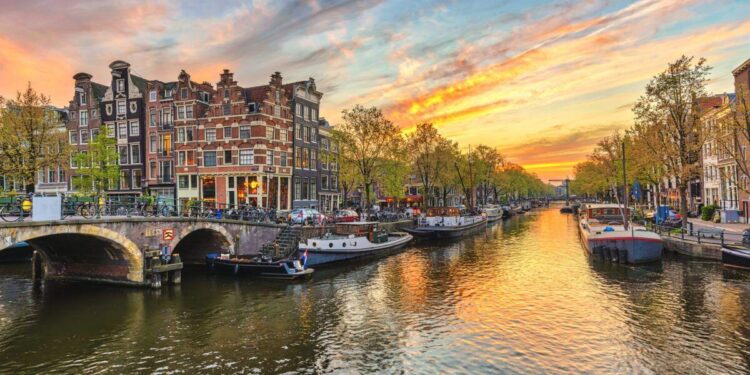The Netherlands is extending an open invitation to cycling leaders and urban planners worldwide, aiming to share the secrets behind its globally renowned cycling infrastructure. Known for its comprehensive bike lanes, safety measures, and cycling-friendly policies, the Dutch model has long set the standard for sustainable urban mobility. In a move highlighted by Zag Daily, the country seeks to foster international collaboration and inspire cities to adopt best practices that prioritize cyclists, reduce traffic congestion, and promote healthier communities.
Netherlands Showcases Infrastructure Innovations Driving Cycling Growth
The Dutch capital continues to set the global standard for cycling infrastructure, revealing a series of cutting-edge projects designed to enhance safety and accessibility for all cyclists. Recent implementations include smart traffic signals that prioritize bike flows and elevated cycle highways that seamlessly connect suburbs to downtown areas, reducing congestion and encouraging more sustainable commuting. These innovations not only cater to daily commuters but also serve as scalable models for cities worldwide aiming to increase cycling uptake.
Key features of the Netherlands’ approach include:
- Integrated bike parking hubs with digital access and charging stations for e-bikes
- Protected intersections designed to drastically reduce collisions between bikes and motor vehicles
- Real-time traffic data shared across platforms to optimize route planning and safety
- Community-driven design processes ensuring diverse needs are met across age groups and abilities
| Innovation | Purpose | Impact |
|---|---|---|
| Smart Traffic Signals | Reduce wait times for cyclists | 15% decrease in travel time |
| Elevated Cycle Highways | Improve route directness and safety | 30% increase in cycling trips |
| Protected Intersections | Enhance collision prevention | 45% drop in bike accidents |
Dutch Experts Share Strategies on Safety and Urban Planning for Global Adoption
Leading Dutch urban planners recently convened a delegation of international cycling advocates to demonstrate the transformative power of thoughtful design and policy integration. The Netherlands’ approach hinges on prioritizing cyclist safety through well-engineered infrastructure, such as dedicated bike lanes segregated from vehicular traffic and advanced traffic signaling that caters specifically to cyclists. Experts emphasized the role of community-driven consultation in shaping plans that do not merely accommodate bicycles but empower them as a primary mode of transport within dense urban environments.
Key strategies shared during the sessions included:
- Implementation of “filtered permeability” to restrict through-traffic for cars while allowing cyclists and pedestrians free movement.
- Smart intersection designs that reduce collision points and visibility issues.
- Continuous maintenance and adaptation guided by real-time data collection on cyclist behavior and accident hotspots.
| Strategy | Impact | Global Applicability |
|---|---|---|
| Dedicated Separated Bike Lanes | +45% Safety Improvement | High |
| Filtered Permeability Street Design | -30% Car Traffic Volume | Moderate |
| Smart Traffic Signals | -25% Collision Risk | High |
Key Recommendations for Cities Seeking to Replicate Netherlands Cycling Success
Embracing infrastructure as a foundation remains paramount for cities aspiring to mirror Dutch cycling achievements. Dedicated bike lanes segregated from vehicular traffic, ample and secure bike parking, and thoughtfully designed intersections dramatically improve safety and encourage ridership. Furthermore, integrating cycling into urban planning ensures that new developments prioritize accessibility for cyclists, fostering a culture where biking is perceived as a convenient, everyday mode of transportation rather than a recreational activity.
City leaders should also focus on holistic policy frameworks that resonate with community needs. This includes:
- Investing in education and awareness campaigns to promote safe cycling practices and respect among all road users.
- Implementing supportive legislation such as traffic calming measures and strict enforcement of rules protecting cyclists.
- Encouraging multi-modal transport integration so cycling complements public transit, making longer commutes feasible and seamless.
| Recommended Action | Impact | Example from Dutch Cities |
|---|---|---|
| Protected Bicycle Infrastructure | Increased safety and ridership | Amsterdam’s extensive cycling network |
| Comprehensive Urban Planning | Enhanced connectivity and accessibility | Utrecht’s integrated neighborhood designs |
| Policy and Legislation | Stronger legal protections for cyclists | National traffic laws favoring cyclists |
Closing Remarks
As the Netherlands continues to solidify its position as a global leader in cycling infrastructure and culture, its invitation to international cycling authorities underscores a commitment to sharing expertise and fostering sustainable urban mobility worldwide. By opening its doors to leaders eager to learn from Dutch successes, the country not only celebrates its achievements but also accelerates the global shift toward safer, more efficient, and eco-friendly transportation. The outcomes of these collaborative exchanges could well pave the way for cities around the world to reimagine their approach to cycling, inspired by the proven Dutch model.
















